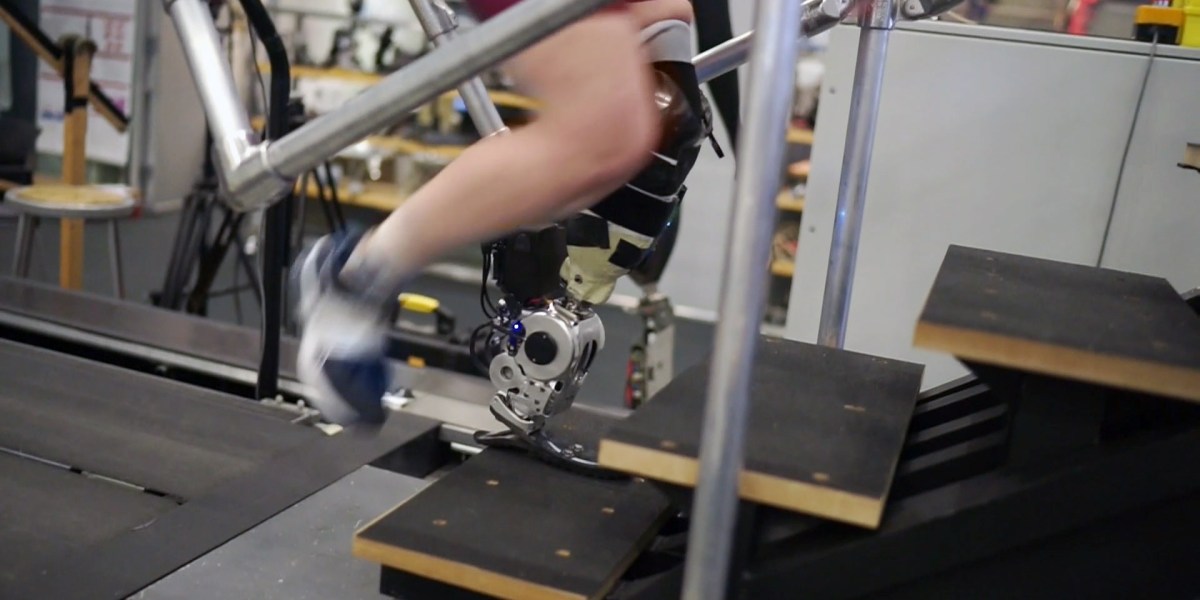Getting the neural interface hooked up to a prosthetic takes two steps. First, patients undergo surgery. Following a lower leg amputation, portions of shin and calf muscle still remain. The operation connects shin muscle, which contracts to make the ankle flex upward, to calf muscle, which counteracts this movement. The prosthetic can also be fitted at this point. Reattaching the remnants of these muscles can enable the prosthetic to move more dynamically. It can also reduce phantom limb pain, and patients are less likely to trip and fall.
“The surgery stands on its own,” says Amy Pietrafitta, a para-athlete who received it in 2018. “I feel like I have my leg back.” But natural movements are still limited when the prosthetic isn’t connected to the nervous system.
In step two, surface electrodes measure nerve activity from the brain to the calf and shin muscles, indicating an intention to move the lower leg. A small computer in the bionic leg decodes those nerve signals and moves the leg accordingly, allowing the patient to move the limb more naturally.
“If you have intact biological limbs, you can walk up and down steps, for example, and not even think about it. It’s involuntary,” says Herr. “That’s the case with our patients, but their limb is made of titanium and silicone.”
The authors compared the mobility of seven patients using a neural interface with that of patients who had not received the surgery. Patients using the neural interface could walk 41% faster and climb sloped surfaces and steps. They could also dodge obstacles more nimbly and had better balance. And they described feeling that the prosthetic was truly a part of their body rather than just a tool that they used to get around.

